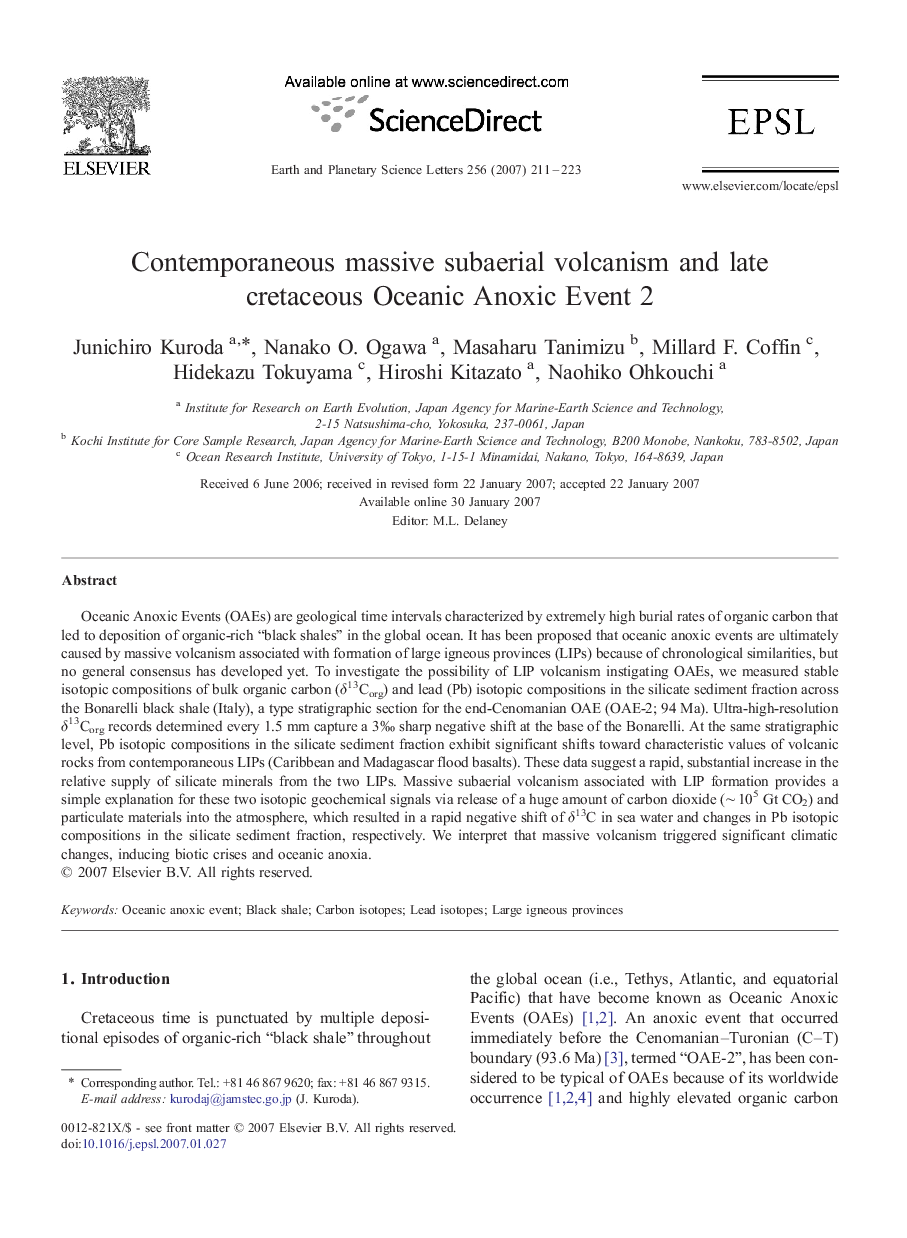| Article ID | Journal | Published Year | Pages | File Type |
|---|---|---|---|---|
| 4680479 | Earth and Planetary Science Letters | 2007 | 13 Pages |
Oceanic Anoxic Events (OAEs) are geological time intervals characterized by extremely high burial rates of organic carbon that led to deposition of organic-rich “black shales” in the global ocean. It has been proposed that oceanic anoxic events are ultimately caused by massive volcanism associated with formation of large igneous provinces (LIPs) because of chronological similarities, but no general consensus has developed yet. To investigate the possibility of LIP volcanism instigating OAEs, we measured stable isotopic compositions of bulk organic carbon (δ13Corg) and lead (Pb) isotopic compositions in the silicate sediment fraction across the Bonarelli black shale (Italy), a type stratigraphic section for the end-Cenomanian OAE (OAE-2; 94 Ma). Ultra-high-resolution δ13Corg records determined every 1.5 mm capture a 3‰ sharp negative shift at the base of the Bonarelli. At the same stratigraphic level, Pb isotopic compositions in the silicate sediment fraction exhibit significant shifts toward characteristic values of volcanic rocks from contemporaneous LIPs (Caribbean and Madagascar flood basalts). These data suggest a rapid, substantial increase in the relative supply of silicate minerals from the two LIPs. Massive subaerial volcanism associated with LIP formation provides a simple explanation for these two isotopic geochemical signals via release of a huge amount of carbon dioxide (∼ 105 Gt CO2) and particulate materials into the atmosphere, which resulted in a rapid negative shift of δ13C in sea water and changes in Pb isotopic compositions in the silicate sediment fraction, respectively. We interpret that massive volcanism triggered significant climatic changes, inducing biotic crises and oceanic anoxia.
